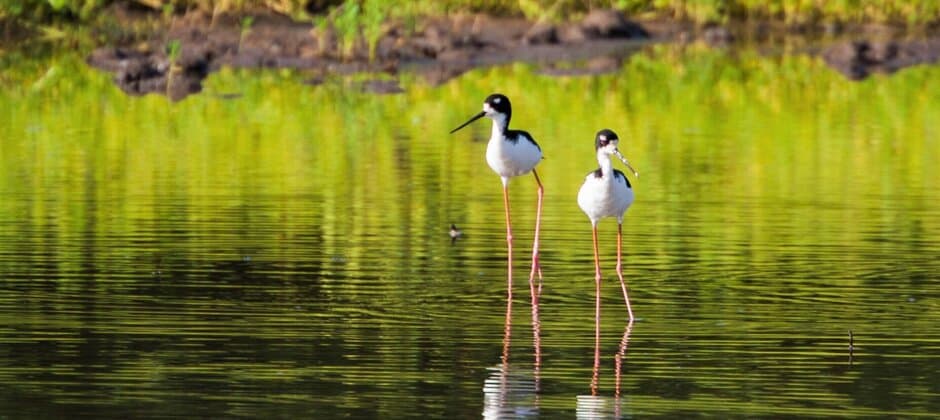Share this article
Hawaiian stilt may be downlisted to threatened
The U.S. Fish and Wildlife Service is proposing to reclassify the ae’o, or the Hawaiian stilt (Himantopus mexicanusknudseni), from endangered to threatened under the Endangered Species Act.
The Hawaiian stilt, a wading bird found on most Hawaiian islands, was first listed under the ESA in 1970 due to habitat loss and degradation, among other threats. The population of Hawaiian stilts increased from 1987 to 2004, and since then has stabilized at approximately 1,500 to 2,000 individuals.
Through their formal review of the species’ status, the USFWS found that threats to the Hawaiian stilt — such as habitat degradation and loss, invasive species, predation and disease — continue to be a concern. However, the USFWS also determined that voluntary and regulatory conservation measures already in place are limiting and mitigating the impacts of these threats, supporting the downlisting decision.
While the four criteria for downlisting in the stilt’s 2010 recovery plan have only been partially met, the agency determined that reclassification is appropriate because substantial progress on habitat protection and management has been made. Additionally, the USFWS points to a recent population viability analysis that indicated the population is stable.
Following policy set in 2019 to have species-specific rules for all newly listed threatened species, the USFWS concurrently announced a proposed 4(d) rule for the stilt. The rule would prohibit all intentional take and most incidental take of the Hawaiian stilt, with specific exceptions. For example, incidental take that’s part of efforts to further the conservation and recovery of the species or helps to encourage the birds to use healthy, managed habitat will be permitted. The goal of the 4(d) rule is to regulate activities that could affect the viability of the Hawaiian stilt, such as agricultural and urban development, recreational and commercial activities, and the introduction of predators, as well as the direct capture, injury, or killing of the birds.
The Hawaiian archipelago is biodiverse and home to many endemic species. It’s also home to the most endangered and threatened species in the country, with over 500 calling the island chain home. The state’s unique geography and topography, combined with the impacts of non-native species and habitat loss, create a perfect storm for some species. Recent years have seen conservation successes however, such as the downlisting of the Hawaiian goose (Branta sandvicensis), also known as the nēnē, and the delisting of the Hawaiian hawk (Buteo solitarius) or ‘io.
The agency will accept comments on the downlisting and the proposed 4(d) rule until May 24.
Read TWS’ Standing Position on Threatened and Endangered Species in the U.S. and Position Statement on the U.S. Endangered Species Act
Header Image: The U.S. Fish and Wildlife Service is proposing to downlist the Hawaiian stilt from endangered to threatened. Credit: Greg Koob/USFWS








